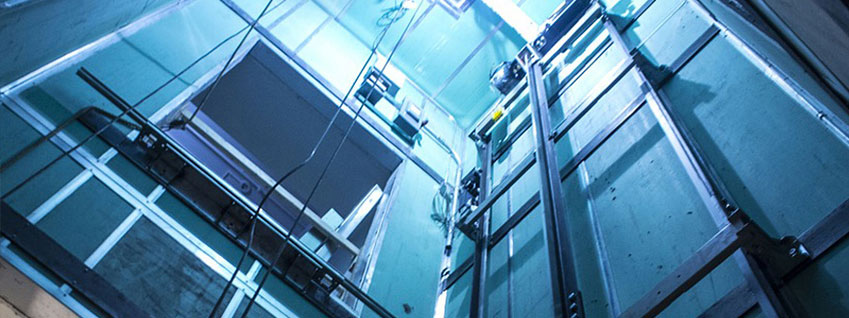Leading Lift Companies in London: Offering Top Quality Installations and Upkeep
Leading Lift Companies in London: Offering Top Quality Installations and Upkeep
Blog Article
Unraveling the Intricacies of Lift Technology: Troubleshooting Common Issues Across Lift Designs
From sluggish operation problems to strange sounds rising from the equipment, repairing common problems across different lift designs requires an eager eye for information and an organized strategy. Keep tuned as we navigate through the labyrinth of lift breakdowns, seeking services to the enigmatic troubles that can interrupt the smooth performance of these essential devices.
Identifying Slow Procedure Issues

Next, check the electrical connections to make sure that all elements are effectively connected and functioning. Malfunctioning circuitry or loose links can cause reduce operation or complete malfunction of the lift system. Furthermore, it is vital to evaluate the control system to figure out if the problem hinges on the programs or sensing units.
If the visual inspection and electric checks do not reveal the origin of the sluggish operation, further diagnostic tests may be necessary. These could include pressure tests for hydraulic systems, voltage examinations for electric parts, or running analysis software program for the control system. repair and maintenance services. By adhering to an organized strategy to repairing slow-moving procedure problems, you can effectively fix the issue and determine, guaranteeing the lift operates securely and properly
Addressing Weird Sounds
To efficiently repair lift technology for unusual sounds, a comprehensive exam of the lift components complying with the recognition of slow operation problems is essential. Odd sounds in lifts can be a measure of underlying troubles that require timely focus to ensure the safety and security and integrity of the system.
Furthermore, it is important to describe the lift manufacturer's maintenance guidelines and look for aid from certified specialists when taking care of complicated lift elements or unknown troubleshooting procedures. By quickly attending to odd noises and fixing underlying issues, lift operators can ensure the optimal efficiency and safety and security of the lift system for operators and passengers.
Managing Faulty Control Troubles
An efficient technique for addressing malfunctioning control issues in lift modern technology includes conducting a thorough evaluation of the control system's components and capability. When experiencing concerns with lift controls, it is important to first look for any loosened links, damaged circuitry, or malfunctioning sensors. Validating that all control displays, switches, and keypads are operating correctly is additionally important in identifying the problem precisely.
If no noticeable issues are evident, technicians must continue to inspect the control panel for any kind of signs of water overheating, damage, or deterioration, as these can often cause regulate malfunctions. Furthermore, resetting the control system or upgrading the software may aid resolve specific problems or pests causing the problem.

Tackling Hydraulic System Malfunctions
The efficiency of hydraulic systems in lifts counts heavily on the appropriate performance of numerous components within the system. When hydraulic systems malfunction we maintain lifts in lifts, it can lead to functional disturbances and safety worries.
An additional frequent hydraulic system malfunction is a loss of pressure, which can result from air getting in the system, liquid contamination, or pump inefficiencies. Specialists can address this by bleeding the system to eliminate air, changing infected liquid, or servicing the pump as required. Additionally, irregularities in hydraulic fluid levels or unusual noises throughout lift procedure might show underlying system breakdowns that require immediate attention to avoid additional damages. Routine upkeep and prompt troubleshooting of hydraulic system problems are critical to making certain the efficient and safe operation of lift technology.
Managing Electric Part Failings
Dealing with electrical component failings in lift innovation requires a systematic approach to detecting and solving problems to maintain functional capability and security standards. When running into electric problems in lift systems, it is crucial to initial carry out an extensive inspection of the electric elements, consisting of control panels, wiring, sensing units, and circuit card. Any kind of indications of damages, deterioration, loose links, or scorched elements should be very carefully noted and resolved immediately to avoid additional complications.
When it comes to electrical part failures, it is vital to comply with supplier guidelines for repairing and repair work treatments. This may include examining the elements making use of multimeters, oscilloscopes, or other diagnostic devices to pinpoint the precise resource of the malfunction. Furthermore, having a thorough understanding of the lift's electrical schematics and electrical wiring layouts can aid in determining and fixing issues effectively.
Normal upkeep and evaluation routines can aid prevent electrical failures by identifying potential problems beforehand. Proper training for lift specialists on electric systems and parts is additionally vital to guarantee precise medical diagnosis and reliable resolution of electric troubles, ultimately contributing to the overall safety and dependability of lift operations.
Final Thought
To conclude, repairing lift modern technology calls for an organized strategy to identify and address london lift company common problems disabled platform lifts prices uk such as slow operation, strange sounds, faulty controls, hydraulic system breakdowns, and electric part failings. By comprehending the intricacies of lift innovation and complying with appropriate troubleshooting steps, technicians can effectively resolve concerns and make certain the effective and risk-free operation of lifts throughout numerous designs.
To successfully troubleshoot lift technology for strange sounds, a detailed assessment of the lift elements following the recognition of sluggish operation issues is important. Strange sounds in lifts can be a sign of underlying problems that call for timely attention to make certain the security and reliability of the system.A reliable method for dealing with faulty control issues in lift technology entails carrying out a comprehensive evaluation of the control system's components and capability.The efficiency of hydraulic systems in lifts counts heavily on the correct functioning of numerous elements within the system. repair and maintenance services. When encountering electric problems in lift systems, it is critical to first perform a comprehensive examination of the electrical parts, including control panels, circuitry, sensors, and circuit boards
Report this page